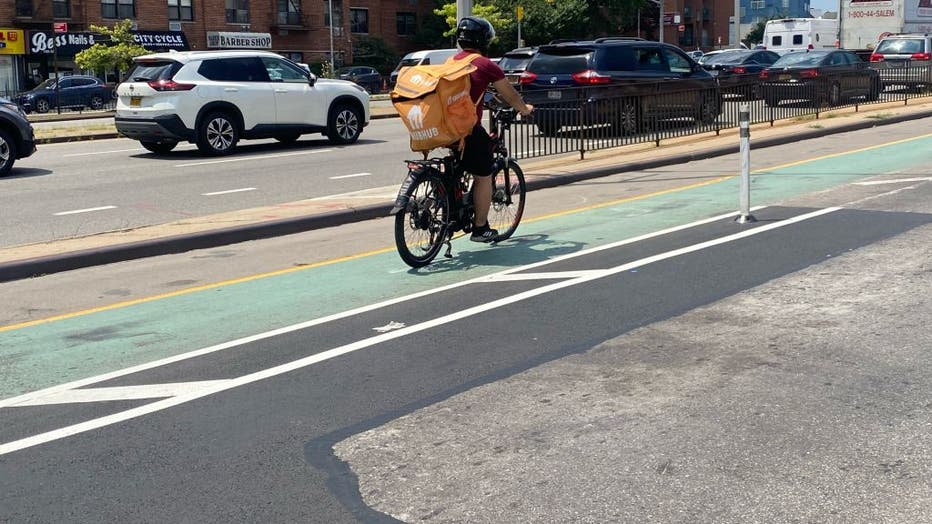Report on first 10 years of 'Vision Zero' on NYC streets
NEW YORK CITY - A report by Transportation Alternatives showcased the data from the first 10 years of "Vision Zero" on New York City streets.
The analysis by Transportation Alternatives and Families for Safe Streets found that whiter and wealthier communities have safer streets than 10 years ago.
Data from Transportation Alternatives shows pedestrian fatalities fell 29% from 2014 to 2023 and traffic fatalities were 16% lower during the decade of "Vision Zero."

(Chart: Transportation Alternatives)
Ten years ago, upon its inception, the program saw 259 New Yorkers lose their lives in traffic accidents within its inaugural year.
Fast-forward to 2023, the same grim statistic resurfaced, claiming the lives of another 259 individuals.
Throughout the last decade, a total of 2,412 New Yorkers have succumbed to traffic-related incidents.
Particularly alarming is the year 2023, which marked the deadliest period for bicyclists since 1999. The surge in fatalities coincides with an increasing number of New Yorkers resorting to bicycles amidst inadequate protected infrastructure.
The report said New York City had the second-fewest pedestrian fatalities in 114 years of recorded data last year, defying an alarming national trend in the other direction.

GrubHub delivery person on electric bike in the bicycle lane on Queens Boulevard, Queens, New York. (Photo by: Lindsey Nicholson/UCG/Universal Images Group via Getty Images)
In 2023, the NYC DOT installed a record 33 miles of new protected bike lanes and created 588,785 additional square feet of pedestrian space, surpassing one million square feet of new pedestrian space over the past two years.
While neighborhoods of color and with lower incomes have seen an increase in traffic violence, the advocates say the "Vision Zero" program has to be fully implemented for it to be effective.
In a statement to FOX 5 NY, the DOT says they've seen the greatest decreases in pedestrian fatalities both in neighborhoods with high poverty rates and the highest level of non-white residents.
"Since the beginning of Vision Zero back in 2014, NYC DOT has worked to ensure all New Yorkers benefit from safety projects – with Safety Improvement Projects slightly more concentrated in neighborhoods of high or very high poverty than in lower-poverty areas," DOT spokesperson Anna Correa said. "Our commitment to equity influences where we prioritize our work, weighing neighborhood race and income, density, and history of past projects."

